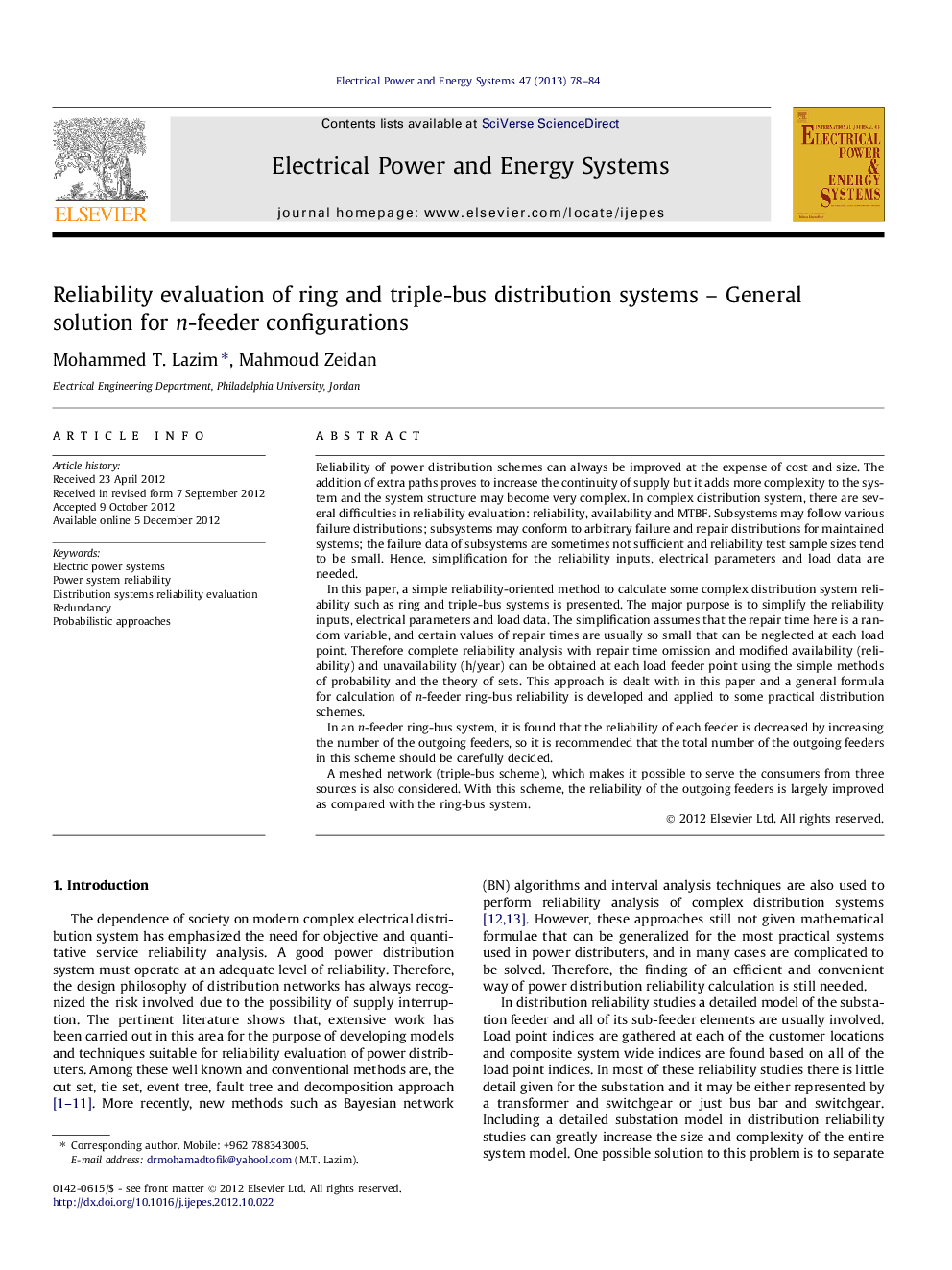| Article ID | Journal | Published Year | Pages | File Type |
|---|---|---|---|---|
| 399561 | International Journal of Electrical Power & Energy Systems | 2013 | 7 Pages |
Reliability of power distribution schemes can always be improved at the expense of cost and size. The addition of extra paths proves to increase the continuity of supply but it adds more complexity to the system and the system structure may become very complex. In complex distribution system, there are several difficulties in reliability evaluation: reliability, availability and MTBF. Subsystems may follow various failure distributions; subsystems may conform to arbitrary failure and repair distributions for maintained systems; the failure data of subsystems are sometimes not sufficient and reliability test sample sizes tend to be small. Hence, simplification for the reliability inputs, electrical parameters and load data are needed.In this paper, a simple reliability-oriented method to calculate some complex distribution system reliability such as ring and triple-bus systems is presented. The major purpose is to simplify the reliability inputs, electrical parameters and load data. The simplification assumes that the repair time here is a random variable, and certain values of repair times are usually so small that can be neglected at each load point. Therefore complete reliability analysis with repair time omission and modified availability (reliability) and unavailability (h/year) can be obtained at each load feeder point using the simple methods of probability and the theory of sets. This approach is dealt with in this paper and a general formula for calculation of n-feeder ring-bus reliability is developed and applied to some practical distribution schemes.In an n-feeder ring-bus system, it is found that the reliability of each feeder is decreased by increasing the number of the outgoing feeders, so it is recommended that the total number of the outgoing feeders in this scheme should be carefully decided.A meshed network (triple-bus scheme), which makes it possible to serve the consumers from three sources is also considered. With this scheme, the reliability of the outgoing feeders is largely improved as compared with the ring-bus system.
► We develop a general formula for calculation of ring-main feeder’s reliability. ► We found that as the number of the feeders increases the reliability will decreases. ► In the ring system the number of feeders to be connected must be carefully decided. ► With triple-bus the reliability of the outgoing feeders is largely improved.
